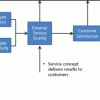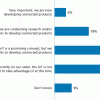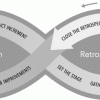Strategic advice to leverage new technologies
Technology is at the heart of nearly every enterprise, enabling new business models and strategies, and serving as the catalyst to industry convergence. Leveraging the right technology can improve business outcomes, providing intelligence and insights that help you make more informed and accurate decisions. From finding patterns in data through data science, to curating relevant insights with data analytics, to the predictive abilities and innumerable applications of AI, to solving challenging business problems with ML, NLP, and knowledge graphs, technology has brought decision-making to a more intelligent level. Keep pace with the technology trends, opportunities, applications, and real-world use cases that will move your organization closer to its transformation and business goals.
Recently Published
Business rules and complex event processing (CEP) are technologies that have been around for some time now. Both technologies provide options to support one of the long-standing objectives in enterprise architecture (EA): to adapt and accommodate rapid-pace business change with a constant, stable, and sustainable architectural foundation. The accompanying Executive Report examines how we can use techniques in enterprise architecture to provide a solid basis for supporting business rules and CEP.
Fork and Pull: New Model for Collaboration
This Executive Update provides an understanding of the concepts behind fork and pull and its possible applications for internal and external software development projects, as well as its potential for other applications.
Case management isn't necessarily important for every business, but we have seen that it is a vital concept for some, such as insurance, health, or legal. Even in companies where cases are not currently common, the idea might be relevant -- for example, in handling a customer complaint that spans a longer period of time, or that covers multiple services. The notion of case will probably become more relevant as enterprise architectures become more dependent on their integration with Internet and social technologies.
An examination of the different types of social media analysis practices helps provide a better understanding of their technical capabilities and where they fit in regard to enterprise social analytics needs, as well as how the application of the technology is evolving. There are essentially three main categories of social media analysis practices: social media monitoring, social media listening, and social business analytics. Each provides for increasingly sophisticated analysis of social media data, and each requires the application of increasingly sophisticated technology.
When we use targets for our indicators of success, they become more than an indicator of how well you are doing -- they become the "goal." The targets supplant the valid goal you created and become more important than the thing they were designed to measure. This is the metamorphosis Martin Klubeck warns you about in this Executive Update.
Today's customer is experienced, knowledgeable, demanding, and willing and able to defect to another company at the drop of a credit card. Frustrating customer experiences are rooted in customer-facing services designed from the inside (them)-out (you), absent of what's important to the customer, and more concerned with cost containment than with revenue opportunity.
Enterprise Mobility: Part IV -- The Internet of Things
This Executive Update -- the final in a four-part series -- focuses on survey findings pertaining to the IoT, including how organizations view the IoT in terms of importance, IoT technologies that organizations deem most important for their business, and organizational support for wearable devices.
Improving and Extending Retrospective Outcomes
In this Executive Update, we take a look at application development challenges facing Jake, an inexperienced Agile coach. We then review some ideas and retrospective practices that will help Jake overcome these obstacles and successfully fill his new role as an Agile leader.













